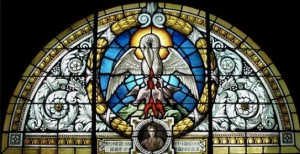The last couple days of our tour we’ll spend in Jerusalem. We’ll walk the Via Delarosa to the place of the skull and then down into the Garden tomb. We’ll start this trek from the traditional site of the Upper Room where Jesus and  His disciples at the last supper. As it introduces us to the events and teachings that take place in the Upper Room, John13:1 tells us, “Now before the Feast of the Passover, when Jesus knew that his hour had come to depart out of this world to the Father, having loved his own who were in the world, he loved them to the end.” The activity in the upper room was all based on God’s great love for His people. John tells us that Jesus washed the disciples feet out of His love for them. The other Gospels explain the elements of bread and wine and how they represent the depth of God’s love for us. Jesus broke the bread and said, “This is my body which is broken for you.” Jesus took the cup and identified it as the symbol of the New Covenant that would be sealed with his blood.
His disciples at the last supper. As it introduces us to the events and teachings that take place in the Upper Room, John13:1 tells us, “Now before the Feast of the Passover, when Jesus knew that his hour had come to depart out of this world to the Father, having loved his own who were in the world, he loved them to the end.” The activity in the upper room was all based on God’s great love for His people. John tells us that Jesus washed the disciples feet out of His love for them. The other Gospels explain the elements of bread and wine and how they represent the depth of God’s love for us. Jesus broke the bread and said, “This is my body which is broken for you.” Jesus took the cup and identified it as the symbol of the New Covenant that would be sealed with his blood.
In one of his laments, the Psalmist says, “I am like a pelican of the wilderness…” (KJV translation of Psalm 102:6). Some translations say “owl” others say “cormorant” But the King James and the New American Standard translators use pelican. Other translations will often give a footnote with the alternate reading of pelican. The same word appears in several Old Testament passages. The pelican, an unclean bird (Lev. 11:18; Deut. 14:17); the pelican will possess Edom (Isa. 34:11); the pelican will lodge in Moab (Zeph. 2:14). In the earliest Christian centuries the pelican became widely used as a symbol of Christ’s sacrifice for His Church. This symbolism has its origin in an ancient belief that the bird punctured her breast to feed the young on her own blood. Some species of pelicans have a red-tipped upper beak that gave rise to the tradition. The pelican appears regularly in Christian art and heraldry (See the stained glass window from Christ Church Cathedral in New Zealand at www.chucklarsen.com). The artist who designed the title page for the AV in 1611 included a depiction of a pelican feeding its young.
I read that the Crusaders put a pelican on their shields and carved a pelican over the archway leading to a replica of the Upper Room. They believed in the tradition that when there was no food to feed its young, the pelican would tear out its own heart to feed them. In a very real sense, this illustrates the depth of God’s love for his children. “Greater love has no one than this that one lay down his life for his friends.” John 15:13